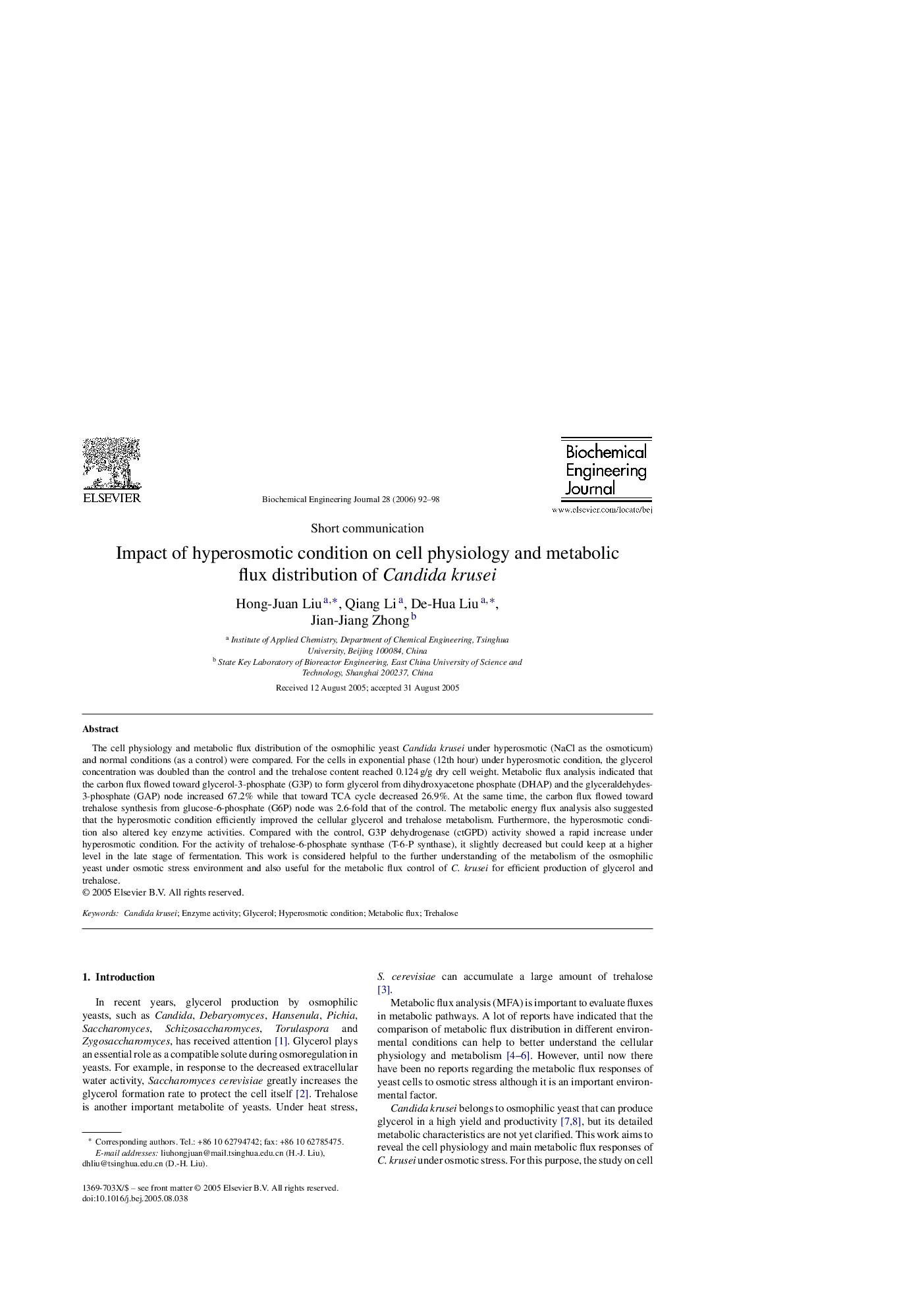| کد مقاله | کد نشریه | سال انتشار | مقاله انگلیسی | نسخه تمام متن |
|---|---|---|---|---|
| 4983 | 265 | 2006 | 7 صفحه PDF | دانلود رایگان |

The cell physiology and metabolic flux distribution of the osmophilic yeast Candida krusei under hyperosmotic (NaCl as the osmoticum) and normal conditions (as a control) were compared. For the cells in exponential phase (12th hour) under hyperosmotic condition, the glycerol concentration was doubled than the control and the trehalose content reached 0.124 g/g dry cell weight. Metabolic flux analysis indicated that the carbon flux flowed toward glycerol-3-phosphate (G3P) to form glycerol from dihydroxyacetone phosphate (DHAP) and the glyceraldehydes-3-phosphate (GAP) node increased 67.2% while that toward TCA cycle decreased 26.9%. At the same time, the carbon flux flowed toward trehalose synthesis from glucose-6-phosphate (G6P) node was 2.6-fold that of the control. The metabolic energy flux analysis also suggested that the hyperosmotic condition efficiently improved the cellular glycerol and trehalose metabolism. Furthermore, the hyperosmotic condition also altered key enzyme activities. Compared with the control, G3P dehydrogenase (ctGPD) activity showed a rapid increase under hyperosmotic condition. For the activity of trehalose-6-phosphate synthase (T-6-P synthase), it slightly decreased but could keep at a higher level in the late stage of fermentation. This work is considered helpful to the further understanding of the metabolism of the osmophilic yeast under osmotic stress environment and also useful for the metabolic flux control of C. krusei for efficient production of glycerol and trehalose.
Journal: Biochemical Engineering Journal - Volume 28, Issue 1, February 2006, Pages 92–98